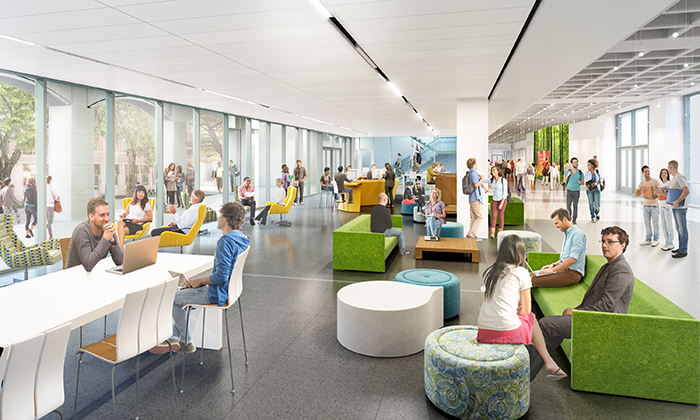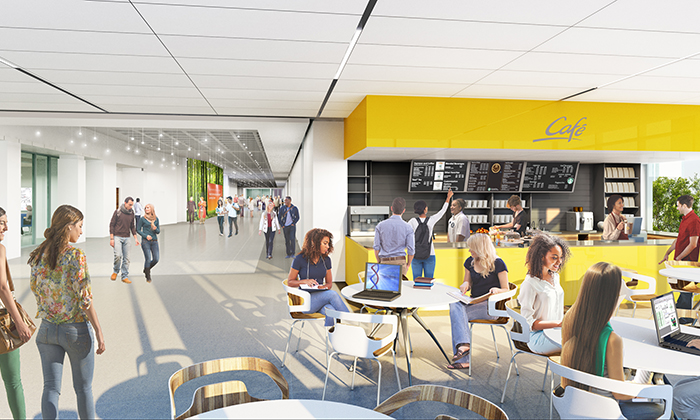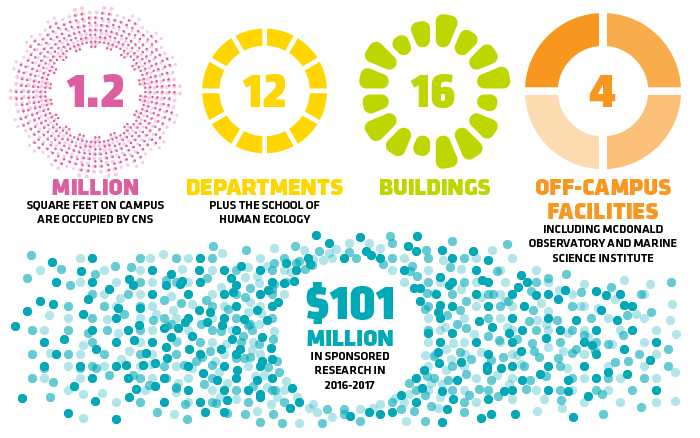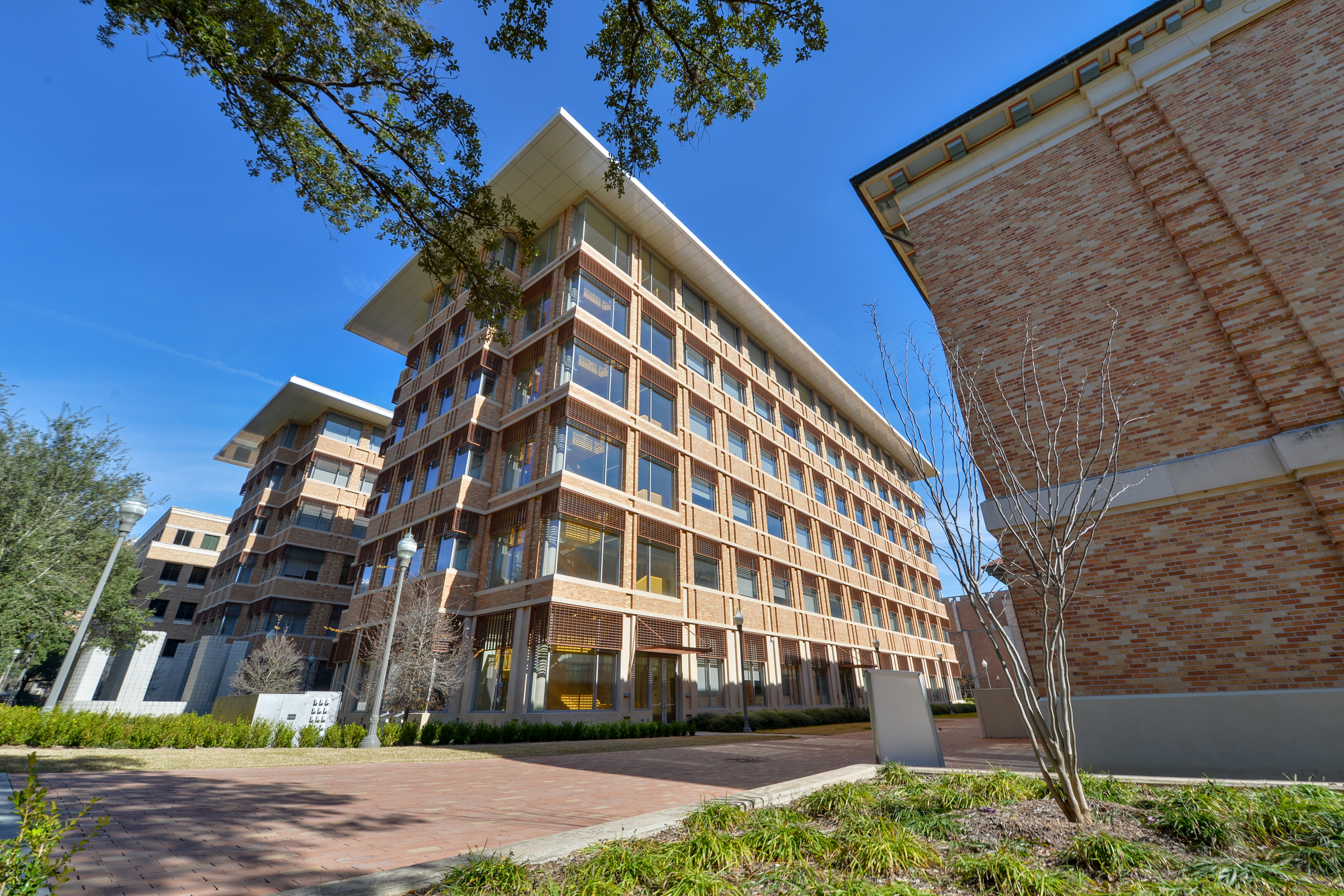In Science, Facility Plans Determine Staying Ahead of the Technological Curve

An artist's rendering of the new concourse in Welch Hall.
Weeks after most students have left UT Austin's campus for the summer, the heart of the Forty Acres is anything but quiet. The steady beeping of a forklift mixes with the drone of power tools and the occasional boom of construction debris being dropped out a third-floor window and into a skiff.
All of this is happening at Welch Hall, a building whose oldest wing opened in 1929 and which now is the largest academic building on campus. The first phase of renovation, completed in 2016, created modernized research and teaching labs, new active-learning classrooms and specially designed spaces for the Freshman Research Initiative. Phase 2 is now underway, and renovations of Welch Hall will continue for the next couple of years.

An artist's rendering of a new cafe area in Welch Hall, which is undergoing renovations.
Proceeding as Planned
Perhaps nowhere else on campus are research and learning tied so closely to the buildings they happen in, said Dean Appling, associate dean of research and facilities for the College of Natural Sciences. That's why here, unlike in many colleges, one associate dean oversees both research and facilities simultaneously.
"Everything is dependent on having facilities and equipment that match the specialized research you're doing," Appling said.
Five years ago, CNS developed an ambitious master space plan to determine how to upgrade and overhaul many of the buildings where scientific research takes place within the college. The plan, completed in 2013, outlines all the renovations, construction and repairs that college buildings and facilities need.
To date, Welch is the largest project undertaken as part of the plan, and it is on track for a 2020 completion. But hundreds of smaller projects have been finished, too. All told, between 50 and 60 renovation or building projects of varying sizes are happening across the college at any one time.
Like a lot of universities, UT has an aging stock of buildings, most of which were built around 50 years ago.
"Thanks to an explosion of investment in the '60s and '70s, particularly in science and engineering, most universities, public and private, have a bunch of these buildings that are in serious need of renovation. We're not unique there," Appling said, although he mentioned that some buildings, like Welch, are even older.

Tomorrow's Technology
When the speed with which technology changes collides with the length of time it takes to build new buildings, it can be challenging to stay ahead of the curve. That's one reason the College of Natural Sciences has favored building flexible and versatile lab spaces.
The Welch Hall renovation, for example, includes mobile casework so that interior spaces can be changed more easily. Each wing is being designed with broad needs in mind. Some wings, Appling said, are devoted to high-performance labs for research areas such as physical chemistry or biophysics where tight control of environmental factors like temperature and humidity is necessary. Other wings are designed for mid-performance labs that can support areas such as analytical chemistry, biochemistry or molecular biology.
"Our approach has been to think about flavors of research technology, the physical space, and the engineering and mechanicals that it takes to support each flavor," Appling said. "We'll miss a few. But by not designing custom labs for particular faculty members, we have a better chance at being ready for the next new research area that isn't even on the horizon yet."
Recruiting for Tomorrow
From cutting-edge telescopes for astronomers to cryo-electron microscopy facilities for molecular biologists, equipment and technology remain fundamental to success in science. And the logistics and funding behind them remain some of the most complicated behind-the-scenes parts of producing scientific discoveries. They take, Appling said, "a tremendous amount of planning."
Facilities play an important role in recruiting new faculty and researchers, too. The cost of renovations, equipment and facilities has to be factored into the price tag of recruiting new faculty members.
"If a department says they want to recruit a certain type of researcher, we have to think ahead about where we're going to put them," Appling said.
For example, as part of the recruitment package for Dan Leahy to become the chair of the Molecular Biosciences Department in 2016, the college secured funding to develop a new facility for cryo-electron microscopy. Appling and his team identified an empty space in the basement of the Faulkner Nanoscience and Technology building. It was big and had high ceilings. Engineers were called in to see if a couple of cryo-electron microscopes could work in the space.
Eventually, this led to the creation of the Sauer Laboratory for Structural Biology, a facility for taking 3-D snapshots of molecules with cryo-EM. The facility promises to help in understanding diseases and designing better drugs – and it already has proven important in recruiting other new faculty to the department.
Next, the college is turning its eyes to upcoming projects in the master space plan. Major renovations are planned for R.L. Moore, Patterson, and BIO Labs, among other spots. Some of these renovations will take years to complete and even start, but Appling and others are already at work putting the pieces in motion.
"Facilities have to be thought of early on," he observed, "because our research is so technologically demanding."
This is the third in a series of posts examining recent changes in the College of Natural Sciences. Read other parts of the series here and here.



